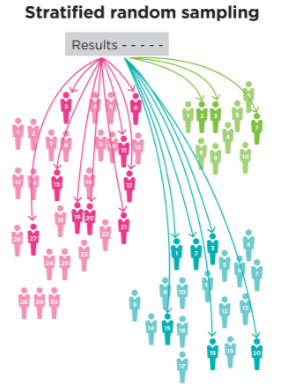Chapter 7: Sampling & External Validity
1/16
There's no tags or description
Looks like no tags are added yet.
Name | Mastery | Learn | Test | Matching | Spaced |
|---|
No study sessions yet.
17 Terms
What is a population of interest vs a sample from the population?
Population = all members of the group we want to study
Sample = a subset of the members within our group of interest
What is sampling?
The process by which the researcher recruits a sample from a population
What is probability vs non-probability sampling?
Probability - every member of the population has an equal chance of being selected (employs random sampling)
Non-probability - results in a biased sample
What are the different types of probability sampling? (5)
Simple random
Cluster
Multistage
Stratified
Systematic
What is simple random sampling?
Sample is chosen at random; participants have an equal chance of being selected
What is cluster sampling?
Clusters (groups) of participants are randomly selected, followed by data collection from everyone within each cluster
What is multistage sampling?
Random sample of clusters followed by random sample of people within selected clusters
What is stratified sampling?
Researcher identifies particular demographic (strata), then randomly selects individuals within each category

What is systematic sampling?
Researcher randomly chooses N, and counts off every Nth member
What are different types of non-probability sampling? (4)
Convenience
Purposive
Snowball
Quota
What is convenience sampling?
Sampling those who are accessible and readily available
What is purposive sampling?
Only certain kinds of people are included in the sample (snowball)
What is snowball sampling?
Participants are asked to recommend acquaintances for the study
What is quota sampling?
A researcher identifies subsets of the population, sets a target number for each category, and nonrandomly selects individuals within each category until quotas are filled
What is a WEIRD sample?
Western
Educated
Industrial
Rich
Democratic
What is ecological validity?
The extent to which the tasks and manipulations of a study are similar to real-world contexts